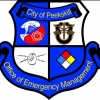
'We're trying to keep her alive': 911 calls reveal drama of Asiana crash
Started by
PEMO3,
-
Recently Browsing 0 members
No registered users viewing this page.

Started by
PEMO3,
No registered users viewing this page.